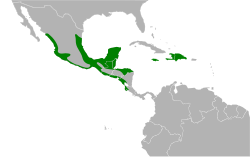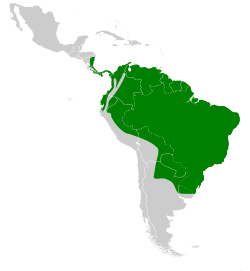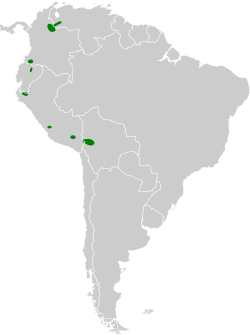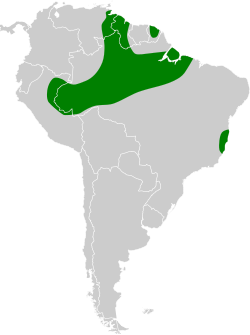| Common name | Scientific name and subspecies | Range | Size and ecology | IUCN status and estimated population |
|---|
| Great potoo  | Nyctibius grandis
(Gmelin, 1789) | southern Mexico through northeastern Guatemala and through most of Central America down through South America as far as southeastern Brazil and Bolivia.
 | Size:
Habitat:
Diet: | LC
|
|---|
| Long-tailed potoo  | Nyctibius aethereus
(Wied-Neuwied, 1820) | from Ecuador and Peru east through southern Colombia and Venezuela to the Guianas, in far northern Bolivia, northeastern Argentina, southeastern Paraguay, and southeastern Brazil
 | Size:
Habitat:
Diet: | LC
|
|---|
| Northern potoo  | Nyctibius jamaicensis
(Gmelin, 1789) | across Central America and the Caribbean.
 | Size:
Habitat:
Diet: | LC
|
|---|
| Common potoo or lesser potoo  | Nyctibius griseus
(Gmelin, 1789)
- N. g. panamensis Ridgway, 1912
- N. g. griseus(Gmelin, JF, 1789)
| Caribbean plain of Colombia
 | Size:
Habitat:
Diet: | LC
|
|---|
| Andean potoo  | Nyctibius maculosus
Ridgway, 1912 | Bolivia, Colombia, Ecuador, Peru, and Venezuela
 | Size:
Habitat:
Diet: | LC
|
|---|
| White-winged potoo  | Nyctibius leucopterus
(zu Wied-Neuwied, 1821) | Brazil, French Guiana, Guyana, Peru, Suriname, and Venezuela
 | Size:
Habitat:
Diet: | LC
|
|---|



















